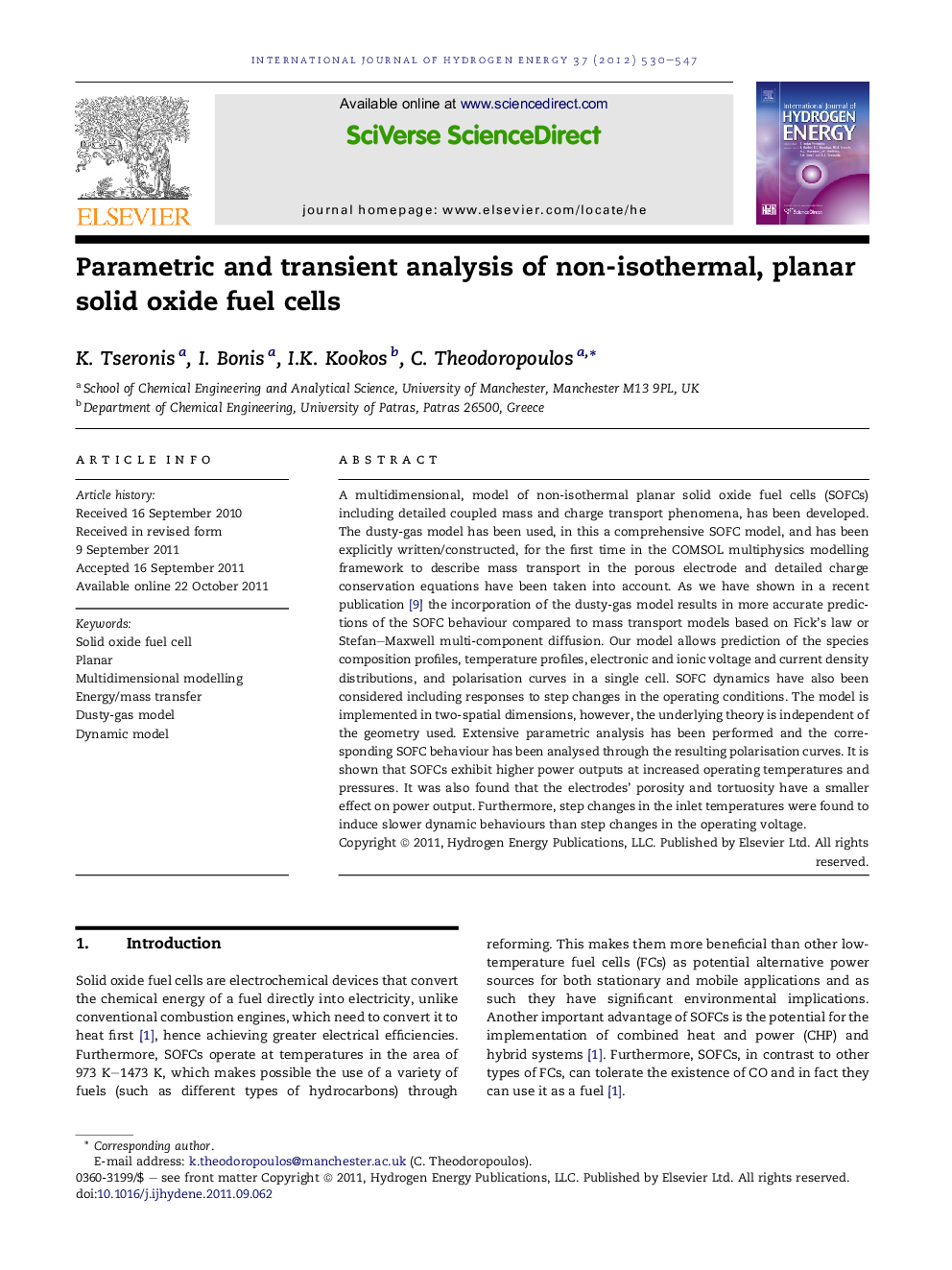| Article ID | Journal | Published Year | Pages | File Type |
|---|---|---|---|---|
| 1277167 | International Journal of Hydrogen Energy | 2012 | 18 Pages |
A multidimensional, model of non-isothermal planar solid oxide fuel cells (SOFCs) including detailed coupled mass and charge transport phenomena, has been developed. The dusty-gas model has been used, in this a comprehensive SOFC model, and has been explicitly written/constructed, for the first time in the COMSOL multiphysics modelling framework to describe mass transport in the porous electrode and detailed charge conservation equations have been taken into account. As we have shown in a recent publication [9] the incorporation of the dusty-gas model results in more accurate predictions of the SOFC behaviour compared to mass transport models based on Fick’s law or Stefan–Maxwell multi-component diffusion. Our model allows prediction of the species composition profiles, temperature profiles, electronic and ionic voltage and current density distributions, and polarisation curves in a single cell. SOFC dynamics have also been considered including responses to step changes in the operating conditions. The model is implemented in two-spatial dimensions, however, the underlying theory is independent of the geometry used. Extensive parametric analysis has been performed and the corresponding SOFC behaviour has been analysed through the resulting polarisation curves. It is shown that SOFCs exhibit higher power outputs at increased operating temperatures and pressures. It was also found that the electrodes’ porosity and tortuosity have a smaller effect on power output. Furthermore, step changes in the inlet temperatures were found to induce slower dynamic behaviours than step changes in the operating voltage.
► We construct a mew detailed model for planar Solid Oxide Fuel cells. ► The Dusty gas model is explicitly written in the COMSOL Multiphysics framework. ► The model can accurately predict species compositions in the fuel channels and the porous electrodes. ► The effect of temperature gradients on the fuel cell performance is illustrated. ► The SOFC dynamic behaviour for step changes in operating parameters is discussed.
